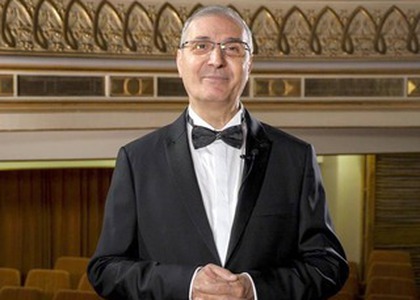> [Archived] Interviews

Interview with Marin Cazacu, manager of the "George Enescu" Philharmonic
On Saturday, January 14th, the first edition of the Musicrit Awards Gala took place, organized by the Union of Music Critics, Editors and Producers from Romania. The award for the best symphonic season in the country went to the George Enescu Philharmonic from Bucharest and the Musicrit Trophy was awarded to the Violoncelissimo ensemble. We learn about the significance of these awards from cellist Marin Cazacu, manager of the Bucharest Philharmonic and founder of the "Violoncelissimo" ensemble, in an interview with Ioana Țintea.
Mr. Marin Cazacu, on Saturday, January 14th, during the first edition of the Musicrit Awards Gala, you received two awards, the award for the best symphony season in the country, that of the George Enescu Philharmonic and the Musicrit trophy awarded to the Violoncellissimo ensemble of which you are the founder. With what kind of thoughts did you receive these awards?
I think that any artist would be pleased to know that the work he does within the institution, in my case that of the general director of the George Enescu Philharmonic, is appreciated by those who actually listen to classical music and who also appreciate the level of performance, both of the orchestra, as well as the programs that we propose to the music-loving public. On the other hand, the "Violoncellissimo" ensemble comes as a continuation, so to speak, of what we do at the "George Enescu" Philharmonic because we promote music in general, Romanian and foreign artists, Romanian and universal music, we promote new ideas, we promote, let's say, the connection between listeners and music, because it is the most beautiful form of promotion of human feelings, and the Violoncellissimo ensemble complements it in a way, because, apart from classical music, we aimed to address other musical genres and that is why we start from baroque music for example, classical, romantic we reach modern contemporary music, including in its forms of jazz, rock or entertainment music or film music. It certainly works that we do with great pleasure together with my colleagues and those from the philharmonic and those from the Violoncellissimo ensemble, and these two awards come to give us that framework of joy that our work is appreciated and visible and we can continue on the same direction even with more love and more enthusiasm.
In your opinion, how can it be reduced, and I quote you "the gap created between the level of the "George Enescu" Festival and the concert seasons of symphony orchestras in Romania"?
We started this, to reduce this gap, in the sense that very important artists at the universal level are present on the stage of the "George Enescu" Philharmonic during our concert season, as we see with admiration how great artists, conductors, soloists, and moreover, orchestras are present on the stage of the "George Enescu" International Festival, if we had these artists also in our season, we could already say that we are getting close to this. These artists that we have already scheduled in our concert season since last year, confirm that their level is at the level of important festivals. This is what this reduction of the gap was referring to and certainly the fact that you have great artists and conductors and soloists in the season, the orchestra displays its qualities at a much higher and more demanding and also efficient level and the concerts have a much higher artistic level.
What are the guidelines for the current season of the George Enescu Philharmonic?
We are going the same way that we stated at the beginning of the season with these guest artists that we consider valuable. Some of them are on the stage of the Athenaeum for the first time and for the first time ever in Romania. So we go with this concept, symphonic and vocal-symphonic concerts to have the highest possible level, both through the presence of the artists and the presence of the covered repertoire. We also worked in the first audition with commissioned works for young Romanian composers. We also have Romanian music selected among the best works that are part of our season and what we develop in particular is a connection with a new audience and then also the projects that the George Enescu Philharmonic already had, and I mean the extraordinary project Clasic e fantastic, which continues its programming in a very clear direction, because it is a very visible project and very loved by young people and children, parents and grandparents. We have the Tuesday season, an open season for young Romanian artists who are at the beginning of their careers and who we promote together with Radio România, and we have also developed a project called Music for Everyone, in which our concerts with bands from the orchestra symphonic and from the philharmonic choir, prepare attractive programs that are very popular in a way, but even more daring and that are explained to the public with comments from some musicologists that we have at the George Enescu Philharmonic.
Translated by Georgiana-Carmen Rădulescu,
University of Bucharest, Faculty of Foreign Languages and Literatures, MTTLC, year II
Corrected by Silvia Petrescu














